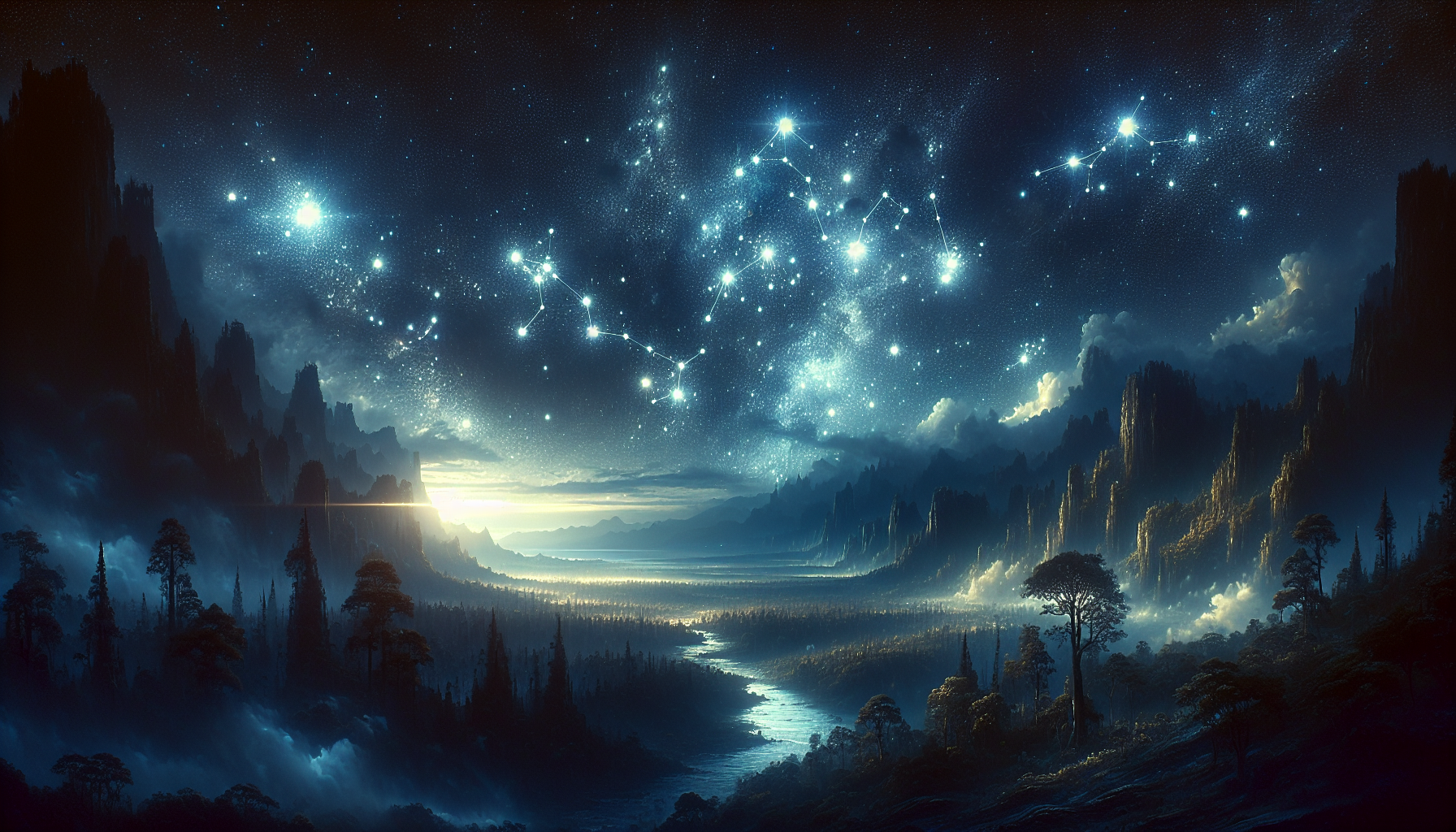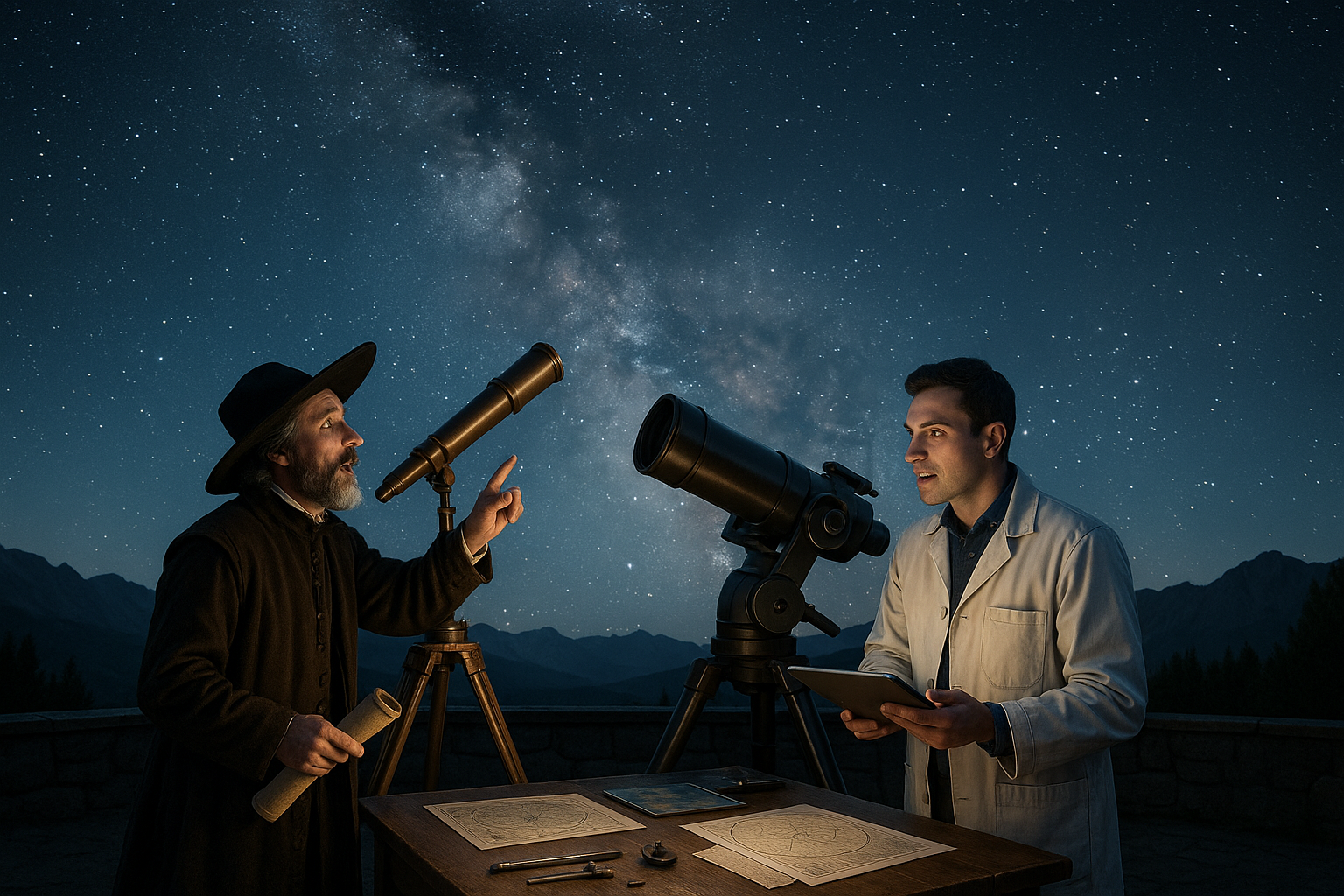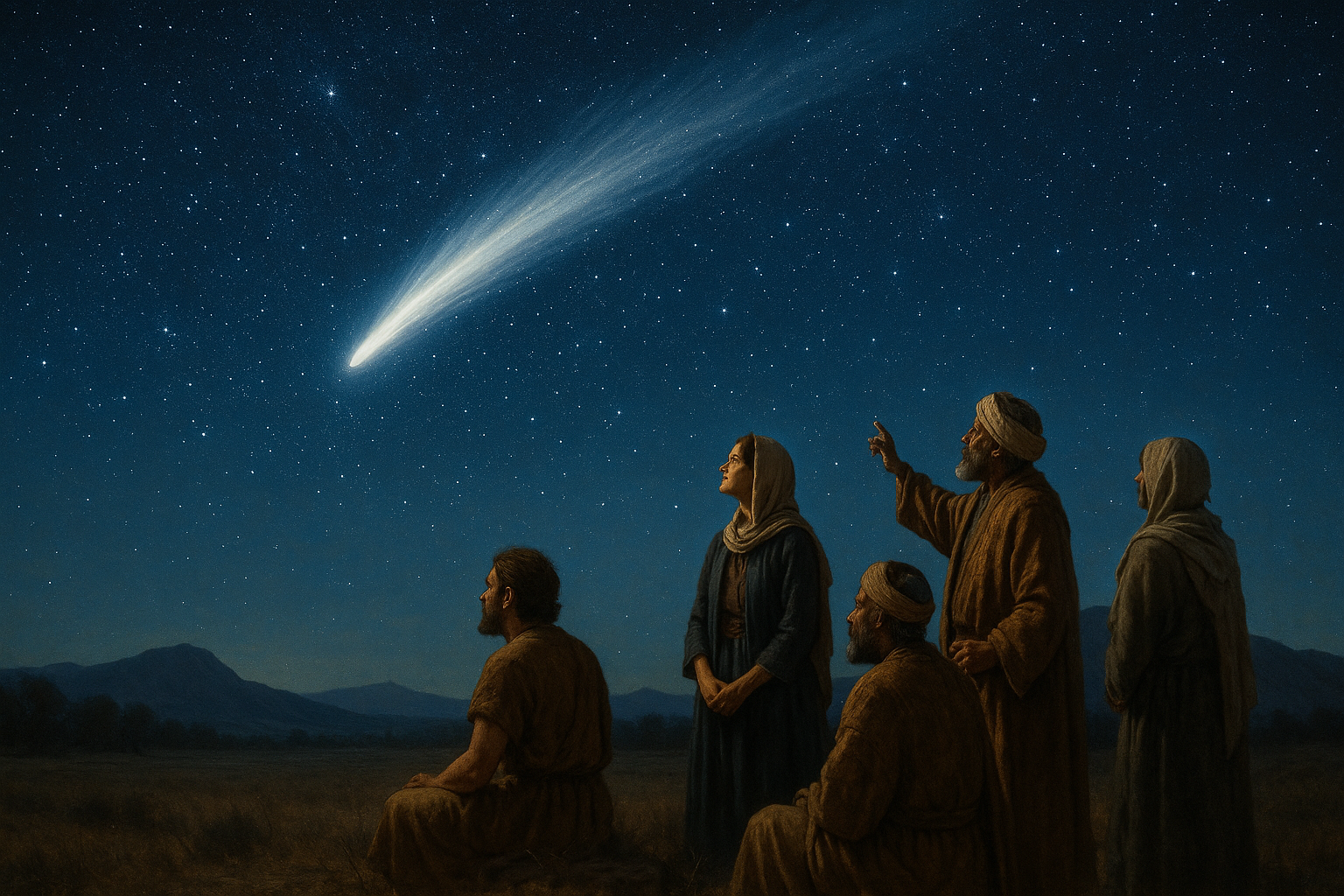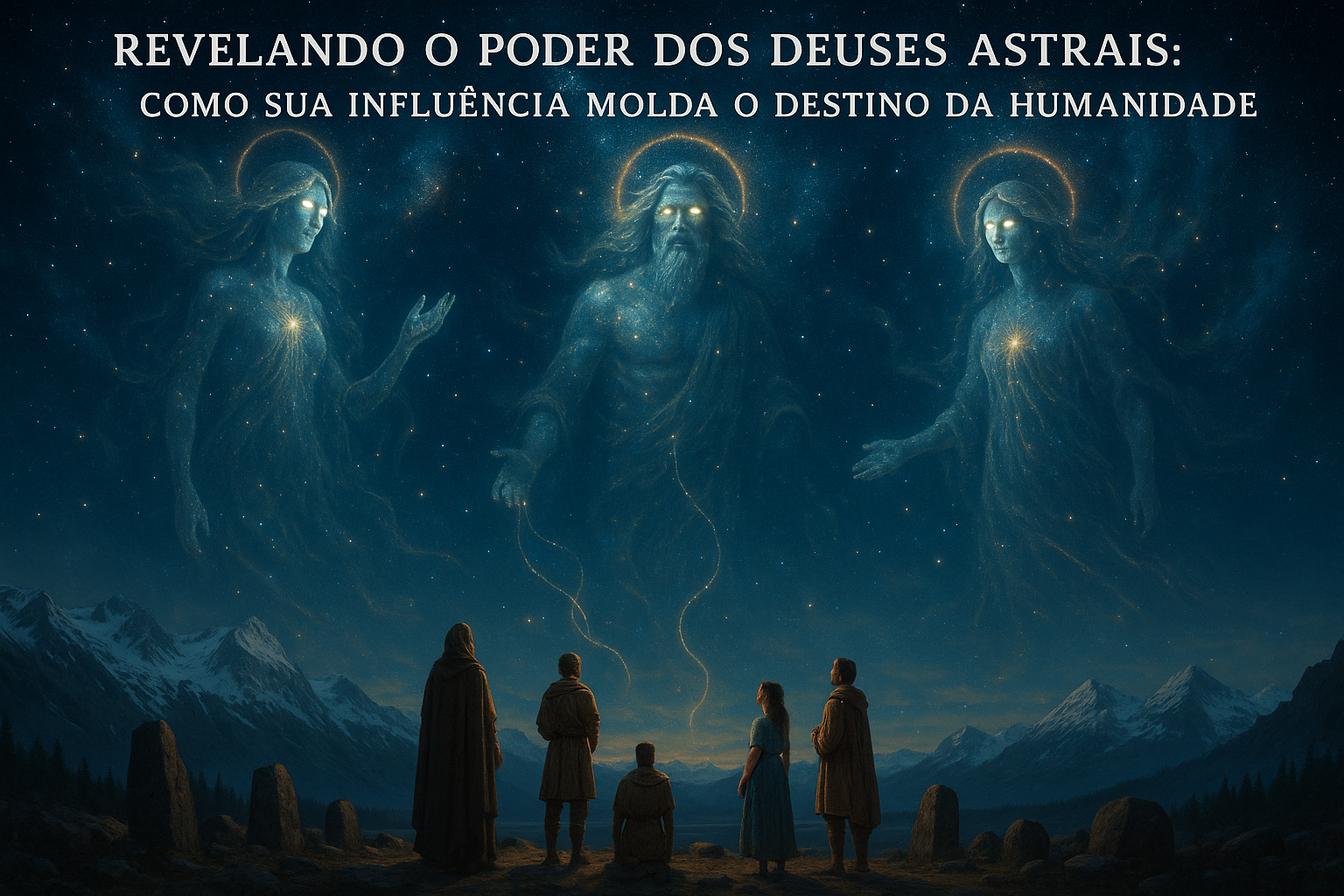In the vast expanse of the night sky, where the inky black canvas is punctuated by the shimmering brilliance of countless stars, lies a realm of enchantment and wonder that has captivated human imagination for millennia. This celestial tapestry, woven with stories and symbols from ancient cultures, invites us to explore the mythical constellations that have guided sailors, inspired poets, and sparked the curiosity of astronomers throughout the ages. As we embark on this cosmic journey, we will delve into the origins and legends of these starry figures, uncovering the magic that continues to ignite our sense of wonder and exploration. ✨
Mythical constellations are not merely random groupings of stars; they are narratives written across the sky, each one a chapter in humanity’s quest to understand its place in the universe. From the mighty Hercules, whose tale of strength and heroism blazes through the heavens, to the delicate beauty of Andromeda, forever chained in her celestial domain, these star patterns are imbued with rich storytelling. Our exploration will traverse the ancient myths that birthed these constellations, examining how different cultures interpreted the night sky and used these patterns as navigational guides, calendars, and tools for agricultural planning. We will uncover how these stellar stories reflect the values, fears, and aspirations of the civilizations that crafted them.
As we journey deeper into this stellar wonderland, we will also uncover the scientific marvels and astronomical phenomena hidden within these constellations. From the breathtaking nebulae nestled within Orion’s belt to the pulsating heart of the Crab Nebula in Taurus, the intersection of myth and science offers a profound appreciation for the cosmos. Alongside these discoveries, we will address the modern-day relevance of constellations, exploring how they continue to influence art, literature, and even technology. Prepare to be enchanted by a world where stars and stories intertwine, creating a magical tapestry that connects us all to the universe. 🌌
The Fascination of Mythical Constellations
The night sky has always been a source of wonder and mystery for humanity. Since ancient times, people have gazed upon the stars, weaving stories and myths to explain the celestial patterns they observed. Among these celestial patterns, mythical constellations hold a special place in various cultures. They serve as a testament to the human imagination and the need to find meaning in the universe. The mythical constellations are more than just clusters of stars; they are a rich tapestry of folklore and history that have shaped human culture for millennia. 🪐
One of the most fascinating aspects of mythical constellations is their ability to transcend time and culture. While different civilizations have interpreted the stars in unique ways, there are often surprising similarities in the stories and symbols associated with these constellations. For example, the constellation Orion is recognized in multiple cultures, albeit with different names and mythologies. In Greek mythology, Orion is a great hunter, while in the Māori culture of New Zealand, the same stars form the figure of “Tautoru,” also a hunter. This cross-cultural presence highlights the universality of star-gazing and myth-making.
Another captivating feature of mythical constellations is their role in navigation and timekeeping. Ancient sailors used the stars to chart their courses across the oceans, relying on the constellations to guide them safely to their destinations. The constellations also served as calendars for agricultural societies, marking the changing seasons and important events. These practical applications of the constellations underscore their significance beyond mere storytelling. Today, while modern technology has largely replaced celestial navigation, the stories of mythical constellations continue to captivate our imaginations, inviting us to explore the cosmos in search of the extraordinary.
The Stories Behind the Stars
Delving into the mythology of constellations reveals a treasure trove of stories that reflect the beliefs and values of ancient civilizations. Each constellation carries with it a tale, often involving gods, heroes, and mythical creatures. These stories served not only as entertainment but also as moral and educational lessons for those who shared them. 🌌
Take, for instance, the constellation of Andromeda. In Greek mythology, Andromeda was a princess who was chained to a rock as a sacrifice to a sea monster. Her story is one of sacrifice, bravery, and eventual salvation by the hero Perseus, who rescues her from her dire fate. The constellation that bears her name is a reminder of the themes of love and heroism. In modern astronomy, the Andromeda Galaxy, our closest galactic neighbor, shares this celestial space, bridging the gap between myth and science.
Similarly, the constellation of Draco, the dragon, weaves a tale of intrigue and power. In various cultures, dragons are seen as powerful and sometimes fearsome creatures. In Greek lore, Draco represents Ladon, the dragon that guarded the golden apples in the garden of the Hesperides. The imagery of a dragon watching over treasures has parallels in other cultures, signifying wisdom, strength, and vigilance. As you gaze up at Draco, imagine the rich history and symbolism that the ancients saw in this winding constellation.
The Cultural Impact of Mythical Constellations
Mythical constellations have left an indelible mark on art, literature, and culture throughout history. Artists and writers have drawn inspiration from these celestial stories, creating works that echo the themes and characters of the constellations. The influence of mythical constellations can be seen in everything from Renaissance paintings to modern science fiction. 🎨
In literature, constellations often serve as metaphors and symbols, enhancing the depth and meaning of stories. William Shakespeare frequently referenced stars and constellations in his plays, using them to convey fate, destiny, and the passage of time. For instance, in “Romeo and Juliet,” Romeo compares Juliet to the stars, highlighting their ill-fated love as something written in the heavens.
The influence of mythical constellations extends to modern times, where they continue to captivate the public imagination. The constellation Pegasus, for example, has inspired countless stories of adventure and exploration, symbolizing freedom and the pursuit of dreams. As humanity continues to explore the cosmos, the stories of mythical constellations serve as a reminder of our enduring fascination with the stars.
Table of Mythical Constellations and Their Cultural Variations
| Constellation | Greek Mythology | Other Cultural Interpretations |
|---|---|---|
| Orion | Hunter | Māori: Tautoru (Hunter) |
| Andromeda | Princess | Arabic: Al-Mar’ah al-Musalsalah (Chained Woman) |
| Draco | Dragon | Chinese: Tianlong (Heavenly Dragon) |
Exploring the Night Sky: A Call to Adventure
The allure of mythical constellations invites us to embark on our own celestial adventures. Whether through a telescope or simply by looking up on a clear night, observing the stars can be a transformative experience. In a world dominated by technology and artificial light, taking the time to connect with the night sky offers a chance to reflect and find inspiration in the universe’s vastness. 🌠
As you set out to explore the night sky, consider planning a stargazing session during a meteor shower or when the moon is absent, allowing the stars to shine in their full glory. Bring along a star chart or a mobile app to help identify the constellations and learn their stories. This hands-on approach not only enhances your understanding of the stars but also deepens your appreciation for the myths and legends that accompany them.
For those eager to dive deeper into the world of mythical constellations, consider joining an astronomy club or attending a planetarium show. These resources offer opportunities to learn from experts and connect with fellow stargazers who share your passion for the cosmos. As you embark on this journey, remember that the magic of mythical constellations lies in their ability to inspire wonder and ignite the imagination. Don’t miss out on this cosmic adventure; embrace the mystery and marvel at the stories written in the stars.
Watch this inspiring video to dive deeper into the world of mythical constellations: The Magic of the Night Sky by Cosmic Journey.
Discover the enchanting world of mythical constellations and let the stars guide your imagination. ✨

Conclusion
Conclusion: Unveiling the Magic: Discover the Enchanting World of Mythical Constellations
As we draw to a close on this captivating journey through the realm of mythical constellations, we find ourselves standing at the intersection of science, mythology, and history—a crossroad where the past and present meet to inspire the future. Throughout this exploration, we’ve delved into the fascinating stories behind the stars, unraveling the intricate tapestry woven by ancient civilizations to navigate both the night sky and the complexities of human existence.
Recap of Key Points
In our journey, we embarked on a quest to understand how different cultures perceived the heavens, starting with the Greeks, whose vivid myths continue to captivate our imaginations. We explored the constellations of Orion, Cassiopeia, and Pegasus, each with their own unique narratives and significance. By examining these stories, we not only learned about the stars themselves but also about the values, fears, and aspirations of those who first gazed upward and crafted these celestial myths.
We also ventured into the lesser-known territories of Norse, Chinese, and Indigenous mythology, revealing a rich diversity in celestial interpretations. The Norse saw their cosmos through the lens of warriors and gods, while the Chinese constellations offered a harmonious blend of philosophy and astronomy. Indigenous peoples across the globe contributed their own star lore, reflecting deep connections with nature and spirituality.
Importantly, we discussed the scientific advancements that have allowed us to further explore these constellations, shedding light on how modern technology continues to enhance our understanding of the universe. The interplay between mythology and science offers a unique perspective, reminding us that while the stories may differ, the stars remain a constant guide.
The Importance of Mythical Constellations
Understanding mythical constellations transcends mere academic curiosity; it bridges the gap between past and present, providing a shared narrative that connects us all. These celestial stories have been instrumental in shaping cultures and societies, influencing art, literature, and even our philosophical outlooks. They remind us of humanity’s enduring quest for meaning and the universal desire to comprehend our place in the cosmos.
By engaging with these myths, we not only honor the rich tapestry of human history but also spark creativity and imagination in our own lives. The stories of mythical constellations encourage us to look beyond our immediate surroundings and consider the infinite possibilities that lie beyond, fostering a sense of wonder and exploration.
Inspiring Action and Engagement
As we conclude this exploration, I invite you to carry the magic of mythical constellations into your daily life. Whether you’re a stargazer, a storyteller, or simply someone who appreciates the beauty of the night sky, there are countless ways to engage with this enchanting world.
Consider joining a local astronomy club to learn more about the stars and their stories, or visit a planetarium to experience the cosmos in a new light. Share your newfound knowledge with friends and family, sparking conversations that bridge science and mythology. And most importantly, take the time to step outside on a clear night, look up, and let the stars guide your imagination.
In today’s digital age, it’s easier than ever to dive deeper into the world of mythical constellations. There are numerous resources available online, from star charts to interactive apps, that can enhance your stargazing experience. NASA’s Night Sky Network and Sky & Telescope offer excellent tools and information for both beginners and seasoned astronomers.
In closing, the mythical constellations serve as a timeless reminder of humanity’s enduring curiosity and creativity. They challenge us to think beyond the tangible, to dream, and to explore. So let’s embrace this celestial heritage, allowing it to inspire our journey through the stars. 🌌✨
We encourage you to share your thoughts, insights, and experiences in the comments below. Your perspectives enrich this conversation, creating a vibrant community of star enthusiasts and myth lovers. If you found this journey enlightening, consider sharing this article with others who might also be inspired by the magic of mythical constellations. Together, let’s keep the stories alive and continue to look to the stars for guidance, inspiration, and wonder.
Toni Santos is a visual storyteller and cosmic interpreter whose work illuminates the ancient skywatchers and their prehistoric astronomy—the profound ways early humans observed and revered the heavens before written history. Through a visionary lens, Toni explores how the stars, planets, and celestial cycles shaped myth, ritual, and survival in cultures lost to time.
Rooted in a fascination with archaic observatories, stone alignments, and celestial symbolism, Toni’s creative journey reveals the deep human impulse to understand and harmonize with the cosmos. From lunar phases guiding planting seasons to the sacred paths of the Milky Way, each of his works embodies the awe and knowledge encoded in the night sky.
Combining artistic craftsmanship with archaeological insight, Toni’s pieces evoke the mystery and precision of prehistoric astronomers. His work does more than depict—it channels the timeless dance between earth and sky, bridging ancient wisdom with contemporary wonder.
As the visionary behind Vizovex, Toni shares curated visuals, essays, and symbolic studies that invite others to reconnect with the cosmic heritage written in stone and starlight. His creations are a call to look upward, to listen to the silent stories told by the stars, and to honor the first astronomers who mapped the heavens with reverence and ingenuity.
His work is a tribute to:
The celestial wisdom of prehistoric peoples
The sacred geometry of ancient observatories
The enduring bond between human culture and the cosmos
Whether you’re a stargazer, a scholar of ancient mysteries, or someone captivated by the universe’s earliest storytellers, Toni welcomes you to journey through a space where the sky is both map and myth—one constellation, one ritual, one revelation at a time.




